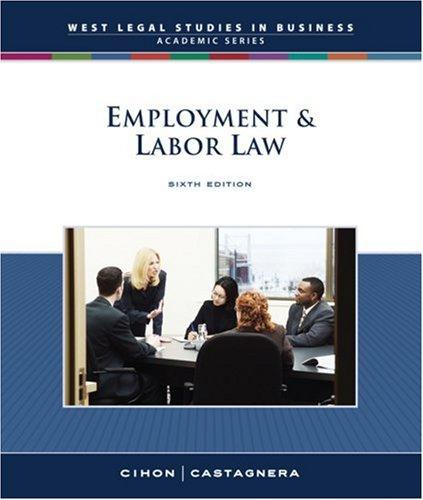10. Rainbow, a tour bus company based in Honolulu, provides ground transportation services to various tourist agencies...
Question:
10. Rainbow, a tour bus company based in Honolulu, provides ground transportation services to various tourist agencies in the Honolulu area. In 1976, Steven Kolt became a part owner and president of the company and adopted its present name.
In 1976, Rainbow was a nonunion business.
In the latter part of that year and early the next year, some employees began inquiring into joining a union. Soon thereafter, on the morning of January 29, 1977, the union picketed the Rainbow yard. Approximately thirty to forty pickets were involved. The pickets were somewhat threatening and unruly and temporarily blocked ingress and egress to the Rainbow yard. Rainbow immediately sought to enjoin the picketing in Hawaii state court. On February 2, 1977, the union agreed before the state court judge to reduce the number of pickets to two.
On February 1, 1977, Rainbow commenced the lawsuit that is the subject of this appeal.
Rainbow brought two counts. The first alleged violations cognizable under Section 303 of the Labor Management Relations Act. The second count, a pendent state law claim, alleged the union had engaged in unlawful mass picketing that tortiously interfered with Rainbow’s employment contracts and resulted in a loss of business.
On March 2, 1977, the union and two former Rainbow employees filed unfair labor practice charges with the NLRB. They alleged Rainbow had unlawfully interfered with its employees’ Section 7 rights by threatening and terminating several of them. Rainbow answered that the union had engaged in activity violative of Sections 8(b)(1)(A)
(coercing employees in the exercise of their Section 7 rights); (b)(4) (illegal secondary conduct); and (b)
(7) (illegal recognitional picketing when no petition had been timely filed). The NLRB consolidated the complaints, and a hearing was held from July 6 to July 13, 1977.
The ALJ entered his decision on March 29, 1978. The NLRB affirmed the ALJ’s findings and adopted his order with minor modifications (241 NLRB. 589, 101 L.R.R.M. 1042, 1979). The NLRB rejected Rainbow’s claims and found for the union.
Does the NLRB’s decision in favor of the union mean that Rainbow cannot recover damages in this case? Or is there a theory of recovery on which it should be permitted to proceed? See Rainbow Coaches v. Hawaii Teamsters [704 F.2d 1443, 113 L.R.R.M. 2383 (9th Cir. 1983)].
Step by Step Answer:

Employment And Labor Law
ISBN: 94288
6th Edition
Authors: Patrick J. Cihon, James Ottavio Castagnera





